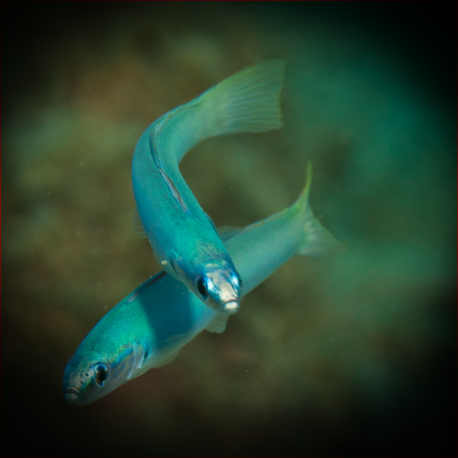More info
Datasheet
| Minimum Tank Size | 100 litres / 26.42 US gallons |
| Maximum Size | 13.0cm / 5.12inches |
| Reef Compatible | Always reef safe |
| Temperament | Docile |
| Temperature | 22.2°C / 71.96°F - 25.6°C / 78.08°F |
| Specific Gravity | 1.020-1.025 |
| Carbonate Hardness | 8-12 |
| pH | 8.1-8.4 |
General Description
The Blue Gudgeon, also known as Smallscale Hovergoby or Long-finned Gudgeon, belongs to the Microdesmidae family and is characterized by its torpedo-like shape. It is native to the waters of the Indo-Pacific region, ranging from the Red Sea to the Line and Tuamoto islands, and from the Ryukyu Islands to the southern Great Barrier Reef.
Aquarium Suitability and Demands
Considered suitable with care for aquariums, this species has an average hardiness level and tends to hide when feeling threatened. It is best suited to tanks with peaceful tank mates to avoid competition during feeding times.
Care and Hardiness
The Blue Gudgeon is a docile species that may hide initially while acclimating to its new environment. Providing hiding holes, such as 3/4" PVC pipes leading to larger chambers with multiple exits, is crucial for their well-being. Dimming the lights when introducing them to a new tank can help reduce stress.
Reef Suitability
This species is classified as always reef safe, making it a great addition to reef aquarium setups.
Aquarium Setup
When setting up the aquarium for Blue Gudgeons, it is important to provide hiding spots and maintain peaceful tank mates to ensure their well-being. Additionally, ensuring the availability of small crustaceans, zooplankton, and frequent feedings, especially when newly added, is essential for their diet and health.
Behaviour
Blue Gudgeons are known to be shy and docile, making them vulnerable to more aggressive tank mates. They have a tendency to jump out of open aquariums, so securing the tank is crucial.
Feeding and Diet
Their diet consists of small crustaceans like krill and mysis, as well as zooplankton such as cyclops and pods. They require frequent feedings, particularly when they cannot find enough natural food in the tank.
Habitat and Distribution
These fish are commonly found in the East Indian Ocean, West Indian Ocean, Australia, Japan, Indonesia, and various regions of the Pacific Ocean. They inhabit areas with plenty of hiding spots, such as holes created by other creatures.

